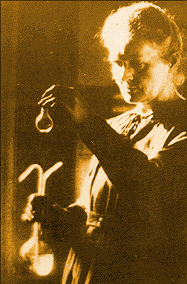

PHYS 105 PHYSICS OF MUSIC Sample Syllabus
PHYS 141 COLLEGE PHYSICS I Sample Syllabus
PHYS 142 COLLEGE PHYSICS II Sample Syllabus
PHYS 241 UNIVERSITY PHYSICS I Sample Syllabus
PHYS 242 UNIVERSITY PHYSICS II Sample Syllabus
PHYS 245 UNIVERSITY PHYSICS III Sample Syllabus
PHYS 260 ELECTRONICS Sample Syllabus
PHYS 330 THERMODYNAMICS
PHYS 339 CLASSICAL MECHANICS Sample Syllabus
PHYS 342 MODERN PHYSICS Sample Syllabus
PHYS 375-376 ADVANCED LABORATORY I, II
PHYS 440 ELECTRICITY AND MAGNETISM
PHYS 490 ADVANCED SPECIAL TOPICS
PHYS 498 INDEPENDENT/DIRECTED STUDY
Physical mechanisms for the production of sound in musical instruments; properties of sound waves and the acoustical environment; loudness, pitch, quality, scales, and harmony; sound perception, reproduction, and synthesis. A quantitative and qualitative approach. 3-hours, including lab.
The above course is a hands-on discovery approach to the mathematical and physical underpinnings of music. We explore the mathematical relationships among notes (frequencies),sound waves, intervals, and scales, including some new and old. We use fast-Fourrier transforms and interfaced computers to explore the harmonic content of instruments played in different ways and see how this content is related to what we call quality, or timbre and why the instrument sounds the way it does. Examples include plucked and bowed string instruments, brass and woodwinds, and percussion instruments. Students are introduced to the physiological mechanisms behind the perception of intervals as harmonious or dissonant and the concept of psychoacoustics, or inferred frequencies, which underly the perception of pitch from pecussion instruments producing a non-harmonic series. Finally, room acoustics is explored including acoustical absorbtion coefficients of materials (measured in the lab), reverberation and reflection times, the echelon effect, and room resonances. Some famous concert halls are used as examples. Highly recommended for music majors. Non-majors should be performers with some knowledge of elements of music thery, esp. scales, intervals, and the harmonic series.
4 credits
Non-calculus introduction to classical mechanics, including motion, momentum, forces, dynamics, torques, circular motion, and simple harmonic motion. Math competency pretest to be administered with follow-up tutorials and testing. 3-hour lecture, 2-hour lab. Prerequisite: College-level algebra, icluding manipulation of equations, trigonometry (sine, cosine, tan), interpreting graphs (and finding slopes), similar triangles, the Pythagorean Theorem, vector notation used throughout course. KSC Math 120 suitable.
The above course is an introductory-level service course for several majors at KSC. It is algebra-based. Math/Phys and Chem/Phys majors are required to complete the calculus-based University Physics sequence. Labs and lecture topics find applications in the biological sciences, chemistry, and numerous other real-world situations. Students are encouraged to continue with the second semester, in which more varied and modern topics are encountered. Should be considered as a gen. ed. course by anyone having the math skills to compete the course.
4 credits
Continuation of PHYS 141. Fluids, thermodynamics, acoustics, electricity and magnetism, and atomic and nuclear physics. 3-hour lecture, 2-hour lab. Prerequisite: PHYS 141 or equivalent.
The student is introduced to a more varied and modern set of topics in this continuation. The same math skills are required. Labs and lectures focus on static fluids (pressure and bouyancy), fluids in motion (including Bernoulli's Principle), stress and strain in solids, temperature, heat, and heat tranfer mechanisms, topics in acoustics and waves, fundamentals of electricity and magnetism, classical and physical optics, and some atomic and nuclear physics, including spectroscopy labs. An interesting course with a broad set of applications in many fields.
4 credits
First of a three-semester sequence designed for Math/Physics, Chem/Physics, Physics minor, other physical science, and Math majors. Emphasizes classical mechanics and problem solving, kinematics, dynamics, conservation of energy, and momentum and oscillations. 3-hour lecture, 2-hour lab. Prerequisite: MATH 151; corequisite: MATH 152.
4 credits
Continuation of PHYS 241. Emphasis on waves, thermodynamics, electrostatics, and electric and electronic circuits. 3-hour lecture, 2-hour lab. Prerequisite: PHYS 241 or equivalent; corequisite: MATH 251.
4 credits
Continuation of PHYS 242. Emphasis on magnetism, electromagnetism, electromagnetic waves, geometrical and wave optics, solid state and quantum physics. 3-hour lecture, 2-hour lab. Prerequisite: PHYS 242 or equivalent.
4 credits
Instrumentation, DC and AC circuitry, signals and noise, electronic models, filters, amplifiers, transducers, and solid-state components. Digital concepts and applications, including coding, gating and counting, and logic circuitry. 3-hour lecture, 2-hour lab. Prerequisite: PHYS 142 or 242 (may be taken concurrently.)
The 1st and 2nd laws of thermodynamics, entropy, Maxwell-Boltzmann statistics. Prerequisites: MATH 251 and PHYS 245.
Analytical treatment of Newton's laws and their application to problems of the kinematics and dynamics of particles and rigid bodies, oscillations, generalized coordinates, Hamilton's and Lagrange's equations. Prerequisite: PHYS 245; corequisite: MATH 361.
Selected topics from atomic physics, quantum mechanics, nuclear physics, and molecular and solid state physics. Includes a brief review of the theory of relativity. Prerequisites: PHYS 245 and MATH 361.
2 credits each
Two semesters of lab experience beyond the introductory level with emphasis upon greater depth, sophistication, precision, creativity, use of analytical skills, and exposure to more technologically advanced apparatus than that previously encountered. Often involves computer data acquisition and analysis. (Each course meets 5 hours a week.) Prerequisite: PHYS 245. Current projects include Optical Rotatory Dispersion studies, work in Prof. Harkay's Thin Films Lab, Gamma Ray Spectroscopy, and Hall Effect studies.
Vector analysis, Coulomb's Law, the electric field, Gauss' Law, the Poisson and Laplace equations, properties of dielectrics, electric current, Ampere's Law, electromagnetic induction, and Maxwell's equations. Prerequisites: PHYS 245 and MATH 361.
1-4 credits
Study of selected topics not covered adequately in other Physics courses. Includes the study of experimental techniques and results, as well as various theoretical models. Prerequisites: PHYS 245 and permission of instructor.
1-4 credits
Individualized, directed study in an area of Physics or to a depth not normally available within the curriculum. The student initiates a research project or takes part in onĄgoing research under supervision of a faculty investigator. Prerequisite: permission of instructor.
 General Science Education Major
Physics Minor
General Science Education Major
Physics Minor